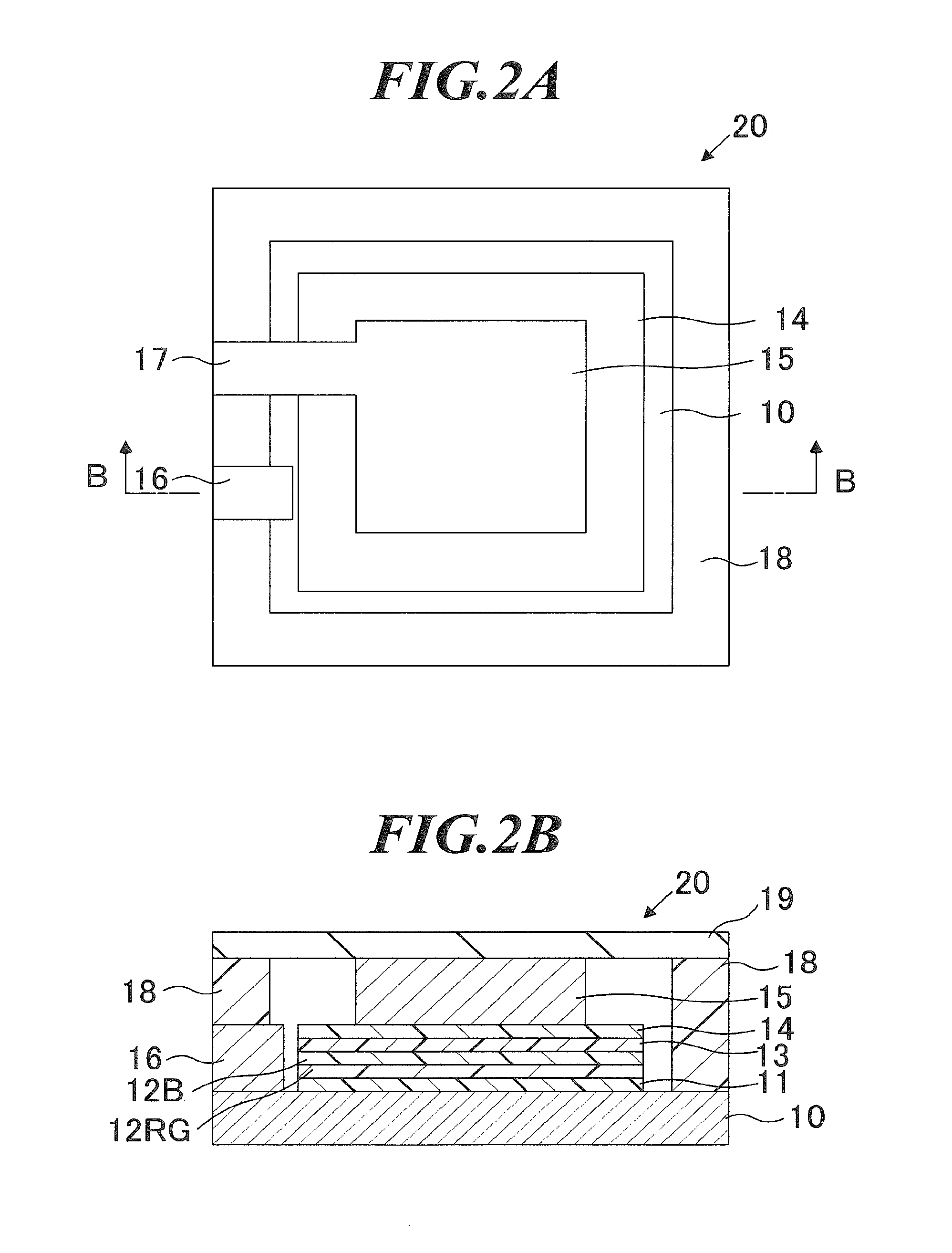Transparent electroconductive film and organic electroluminescent device
a technology organic electroluminescent device, which is applied in the direction of non-metal conductors, conductors, synthetic resin layered products, etc., can solve the problems of insufficient sheet resistance and transmittance to achieve desirable levels of sheet resistance and transmittance, large process load, and deterioration of transparent electroconductive film transparency, electroconductivity and strength of film, and excellent emission uniformity, the effect of improving the degree of transparency
- Summary
- Abstract
- Description
- Claims
- Application Information
AI Technical Summary
Benefits of technology
Problems solved by technology
Method used
Image
Examples
example 1
Manufacturing of Transparent Electroconductive Film
[0130]
[0131]On one surface of the base where the first electroconductive layer was thus-formed by gravure printing and on the first electroconductive layer, coating liquid A described below was coated by extrusion, while adjusting the slit width of an extrusion head so as to give a dried film thickness of 300 nm, and the coated film was dried at 110° C. for 5 minutes. The second electroconductive layer, composed of the electroconductive polymer and the binder resin dispersible into aqueous solvent, was then formed thereon, and the obtained film was cut into 8×8 cm pieces. The obtained film was baked in an oven at 110° C. for 30 minutes, to thereby manufacture a transparent electroconductive film TC-101.
(Coating Liquid A)
[0132]Electroconductive polymer: PEDOT-PSS Clevios PH510 (solid content=1.89%, from H.C. Starck GmbH) 1.59 g
Binder: Polysol FP3000 (aqueous solution with a solid content of 54.4%) 0.13 g
Dimethyl sulfoxide (DMSO, one-...
example 2
Manufacturing of Organic EL Device
[0160]Each of the transparent electroconductive film bases manufactured in Example 1 was washed with ultra pure water, and cut into 30-mm square pieces so as to allow placement of 20-mm square tile-like transparent pattern at the center of each piece. Using each piece as an anode, an organic EL device was manufactured according to the procedures below. A hole transport layer and the layers stacked thereafter were formed by deposition. Organic EL devices OEL-201 to OEL-215 were manufactured using the transparent electroconductive films TC-101 to TC-115, respectively.
[0161]Necessary amounts of constitutive materials for composing the individual layers (Compounds 1-6 described below, CsF and Al) were respectively filled in evaporation crucibles of a deposition apparatus. The evaporation crucibles employed herein were made of molybdenum or tungsten suitable for electric resistance heating.
[0162]FIG. 2A is a top view of an exemplary organic EL device of ...
PUM
| Property | Measurement | Unit |
|---|---|---|
| glass transition point | aaaaa | aaaaa |
| glass transition point | aaaaa | aaaaa |
| glass transition point | aaaaa | aaaaa |
Abstract
Description
Claims
Application Information
 Login to View More
Login to View More - R&D
- Intellectual Property
- Life Sciences
- Materials
- Tech Scout
- Unparalleled Data Quality
- Higher Quality Content
- 60% Fewer Hallucinations
Browse by: Latest US Patents, China's latest patents, Technical Efficacy Thesaurus, Application Domain, Technology Topic, Popular Technical Reports.
© 2025 PatSnap. All rights reserved.Legal|Privacy policy|Modern Slavery Act Transparency Statement|Sitemap|About US| Contact US: help@patsnap.com



